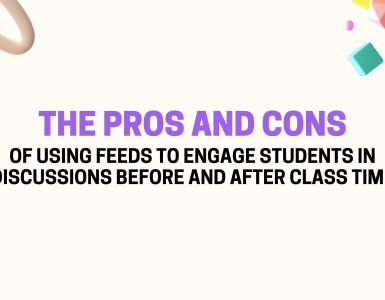Icebreakers can be more than just a way to kick off a class; they can be a key to unlocking deeper engagement and fostering a sense of community among students. When done right, they create an atmosphere where every student feels valued and heard, setting the stage for meaningful learning experiences.
Creating a comfortable environment is crucial for student participation. When students feel at ease, they are more likely to actively engage, whether it’s sharing their thoughts individually or collaborating within a group. According to the Center for Teaching and Innovation at Cornell University, icebreakers serve as excellent tools to acquaint students with course content and expectations, fostering a sense of familiarity and confidence from the get-go.
When Is the Best Time to Use Icebreakers?
Timing is key when it comes to implementing icebreakers effectively. While they are commonly used at the start of a semester, there’s no rigid rule dictating when to incorporate them. It ultimately boils down to the specific goals of your course and the dynamics of your classroom.
Icebreakers can serve multiple purposes throughout the semester. They can be utilized to introduce new topics, break the ice before diving into group projects, or simply energize the class after a break. According to the Center for Teaching and Learning at Indiana University, using icebreakers before group projects helps students become more comfortable with their peers, laying the groundwork for smoother collaboration.
6 Engaging Icebreaker Activities for Your Classroom
- True/False
- Create 2-3 quick questions related to fun facts about the material you’re covering for the day. Provide clues during the lecture. After a few minutes, publish your true/false polls to gauge student understanding.
- Q&A Question
- Ask students to type two interview questions about the class content. Utilize these questions to kickstart discussion posts throughout the semester.
- This or That
- Present students with choices between ‘this or that,’ such as dogs vs. cats. Encourage students to physically move to the side representing their choice. Then, prompt individuals to defend their position among new groups, fostering discussions and connections.
- The One Word Game
- Define the lecture topic in one word. Encourage students to express their understanding or feelings about the subject with a single word, promoting concise thinking and discussion.
- Dinner Game
- Ask students if they could choose one famous person (scientist, psychologist, president, Nobel prize winner, writer, poet, etc) to have dinner with whom they would choose and why. This prompts reflection and conversation, allowing students to engage a little better with the material in class.
- Whodunit
- Split students into groups. Each person writes down an interesting fact about themselves. Guessing “whodunit” based on the facts fosters camaraderie and engagement.
Bonus Activities
Around the World:
- Use a Birth Map to visualize the diversity in the room. Participants share where they were born and a fun fact about their birthplace, building rapport and connections.
Trust Discussion Prompt:
- “What sources of information do you trust when making important decisions? What sources do you not trust? What makes a source trustworthy or not trustworthy?”.
Whether you have 25 students or 500, these sets of icebreakers will surely spark discussion and build rapport amongst your students. Start engaging your class with CampusKnot; it’s free!
References
- Ice-Breaker Activities to use in Your First-Year Student Induction. (n.d.). Retrieved from https://www4.ntu.ac.uk/adq/document_uploads/running_a_course/193397.pdf
- 11 Icebreaker Games for Work Your Team Will Love, Li from https://www.tinypulse.com/blog/sk-work-icebreaker-games
- Desthuis-Francis, L.-K. (2023, September 15). 10 fun icebreakers for college students to better connect. Ready Education. https://www.readyeducation.com/blog/10-fun-icebreakers-for-college-students-to-better-connect




